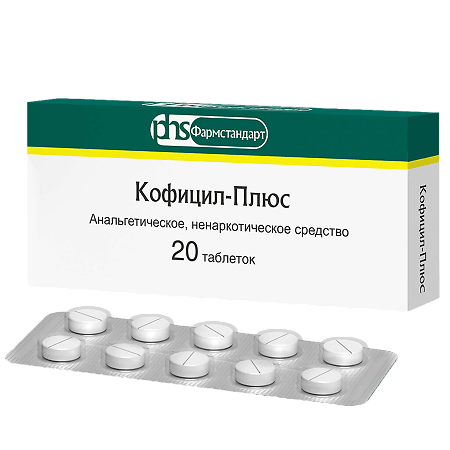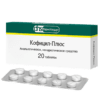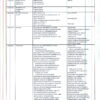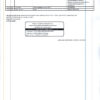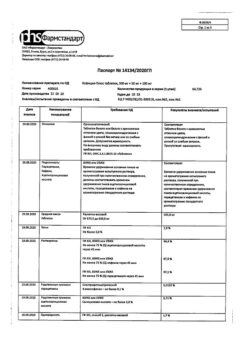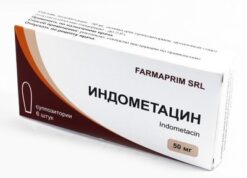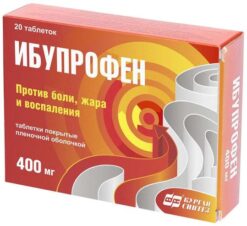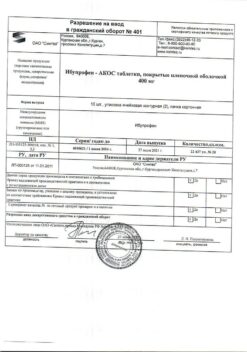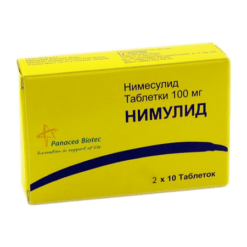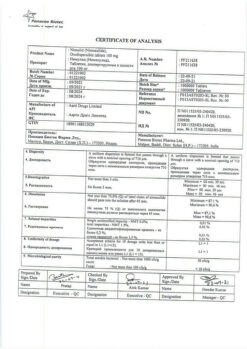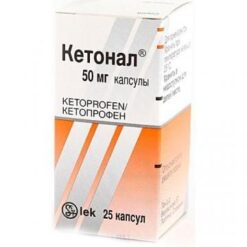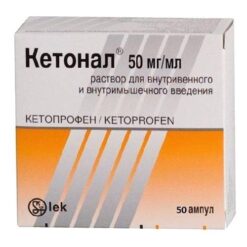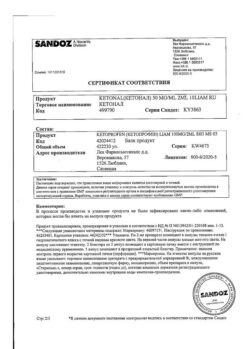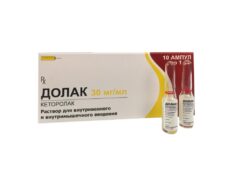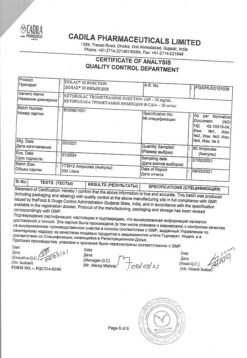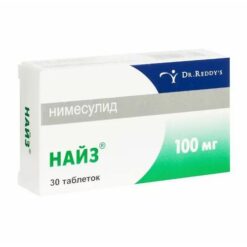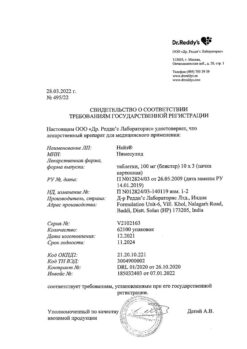No products in the cart.
Cofaceal-plus, tablets 20 pcs
€5.06 €4.22
Description
Combination drug. The drug has analgesic, antipyretic and psychostimulant effects.
Acetylsalicylic acid has antipyretic and anti-inflammatory effects, reduces pain, especially caused by inflammation, and moderately inhibits platelet aggregation and thrombosis, improves microcirculation in the inflammation focus.
Caffeine increases reflex excitability of the spinal cord, excites respiratory and vasomotor centers, dilates blood vessels of skeletal muscles, brain, heart and kidneys, reduces platelet aggregation; it reduces sleepiness and fatigue, increases mental and physical performance. In this combination, a small dose of caffeine has almost no stimulating effect on the central nervous system, but it increases the tone of cerebral blood vessels and accelerates blood flow.
Paracetamol has analgesic, antipyretic and very weak anti-inflammatory activity, which is associated with its effect on the thermoregulation center in the hypothalamus and weak ability to inhibit the synthesis of prostaglandins in the peripheral tissues.
Indications
Indications
Coficil-plus is used in adults with moderate or mild pain syndrome (headache, toothache, neuralgia, myalgia, thoracic radicular syndrome, lumbago, arthralgia, algodismenorrhea, migraine), in adults and children over 15 years of age to reduce elevated body temperature, for colds and other infectious inflammatory diseases.
Pharmacological effect
Pharmacological effect
Pharmacotherapeutic group: analgesic non-narcotic drug (non-steroidal anti-inflammatory drug + analgesic non-narcotic drug + psychostimulant drug)
ATX code: [N02BA71].
PHARMACOLOGICAL PROPERTIES
Pharmacodynamics
Coficil-plus is a combination drug, the effect of which is determined by the components included in its composition.
Acetylsalicylic acid has an analgesic, antipyretic, and anti-inflammatory effect associated with the suppression of cyclooxygenases 1 and 2, which regulate the synthesis of prostaglandins; inhibits platelet aggregation,
Caffeine increases the reflex excitability of the spinal cord, stimulates the respiratory and vasomotor centers, dilates the blood vessels of skeletal muscles, brain, heart, kidneys, reduces platelet aggregation; reduces drowsiness, fatigue, increases mental and physical performance. Paracetamol has an antipyretic and analgesic effect.
Special instructions
Special instructions
With prolonged use of the drug, monitoring of peripheral blood and the functional state of the liver is necessary. Since acetylsalicylic acid has an antiplatelet effect, the patient, if he is undergoing surgery, must notify the doctor in advance about taking the drug. Acetylsalicylic acid in low doses reduces the excretion of uric acid. This can in some cases provoke a gout attack.
During treatment, you should avoid drinking alcoholic beverages (increased risk of gastrointestinal bleeding).
Acetylsalicylic acid has a teratogenic effect: when used in the first trimester of pregnancy, it leads to a malformation – cleft palate; in the third trimester, it promotes inhibition of labor (inhibition of prostaglandin synthesis), closure of the ductus arteriosus in the fetus, which causes pulmonary vascular hyperplasia and hypertension in the vessels of the pulmonary circulation. Acetylsalicylic acid is excreted in breast milk, which increases the risk of bleeding in the baby due to impaired platelet function.
The drug is not prescribed as an analgesic to persons under 18 years of age, and as an antipyretic to children under 15 years of age with acute respiratory diseases caused by viral infections due to the risk of developing Reye’s syndrome (encephalopathy and acute fatty liver degeneration with acute development of liver failure).
Active ingredient
Active ingredient
Acetylsalicylic acid, Caffeine, Paracetamol
Composition
Composition
Active ingredients: acetylsalicylic acid – 300.0 mg, paracetamol – 100.0 mg, caffeine (caffeine anhydrous) – 50.0 mg.
Excipients: potato starch – 97.88 mg, sodium carboxymethyl starch (Type A) – 30.00 mg, talc – 11.20 mg, stearic acid – 5.60 mg, povidone (polyvinylpyrrolidone, Povidone K-17) – 4.00 mg, calcium stearate – 1.32 mg.
Pregnancy
Pregnancy
Use during pregnancy in the first and third trimester is contraindicated; in the second trimester of pregnancy, a single dose of the drug in recommended doses is possible only if the expected benefit to the mother exceeds the potential risk to the fetus.
If it is necessary to use the drug during lactation, breastfeeding should be stopped.
With caution – hyperuricemia, urate nephrolithiasis, gout, peptic ulcer of the stomach and/or duodenum (history), severe heart failure.
Contraindications
Contraindications
– hypersensitivity to acetylsalicylic acid or other non-steroidal anti-inflammatory drugs (NSAIDs) or xanthines; hypersensitivity to other components of the drug;
– erosive and ulcerative lesions of the gastrointestinal tract (in the acute phase), gastrointestinal bleeding;
– severe impairment of liver or kidney function;
– asthma induced by taking acetylsalicylic acid, salicylates and other non-steroidal anti-inflammatory drugs;
– hemorrhagic diathesis (von Willebrand disease, hemophilia, telangiectasia, hypoprothrombinemia, thrombocytopenia, thrombocytopenic purpura);
– dissecting aortic aneurysm;
– deficiency of glucose-b-phosphate dehydrogenase;
– portal hypertension, vitamin K deficiency;
– increased excitability, sleep disturbances, anxiety disorders (agoraphobia, panic disorders);
– organic diseases of the cardiovascular system (acute myocardial infarction, severe coronary heart disease, arterial hypertension), paroxysmal tachycardia, frequent ventricular extrasystole;
– glaucoma;
– surgical interventions accompanied by bleeding;
– children under 15 years of age.
Side Effects
Side Effects
Anorexia, nausea, vomiting, gastralgia, diarrhea, erosive and ulcerative lesions of the gastrointestinal tract, gastrointestinal bleeding, liver and/or renal failure, increased blood pressure, tachycardia.
Allergic reactions: skin rash, Quincke’s edema, bronchospasm.
With long-term use – dizziness, headache, visual impairment, tinnitus, decreased platelet aggregation, hypocoagulation, hemorrhagic syndrome (nosebleeds, bleeding gums, purpura, etc.), kidney damage with papillary necrosis; deafness; Stevens-Johnson syndrome, toxic epidermal necrolysis (Lyell’s syndrome), Reye’s syndrome in children (metabolic acidosis, nervous system and mental disorders, vomiting, liver dysfunction).
Interaction
Interaction
Strengthens the effect of heparin, indirect anticoagulants, reserpine, steroid hormones and hypoglycemic agents. Reduces the effectiveness of spironolactone, furosemide, antihypertensive drugs, anti-gout drugs that promote the excretion of uric acid.
Increases the side effects of glucocorticosteroids, sulfonylurea derivatives, methotrexate, non-narcotic analgesics and non-steroidal anti-inflammatory drugs.
The combination of the drug with barbiturates, antiepileptic drugs, zidovudine, rifampicin and alcohol-containing drinks should be avoided (increases the risk of hepatotoxic effect).
Under the influence of paracetamol, the elimination time of chloramphenicol increases 5 times. Caffeine accelerates the absorption of ergotamine.
Salicylamide and other stimulants of microsomal oxidation promote the formation of toxic paracetamol metabolites that affect liver function. Metoclopramide accelerates the absorption of paracetamol. When taken repeatedly, paracetamol may enhance the effect of anticoagulants (dicoumarin derivatives).
Overdose
Overdose
Nausea, vomiting, stomach pain, sweating, pale skin, tachycardia. In case of mild intoxication – ringing in the ears; severe intoxication – drowsiness, collapse, convulsions, bronchospasm, difficulty breathing, anuria, bleeding. As intoxication increases – progressive respiratory paralysis and uncoupling of oxidative phosphorylation, causing respiratory acidosis. If you suspect poisoning, you should immediately seek medical help.
Treatment: the victim should undergo gastric lavage and be prescribed adsorbents (activated carbon).
Storage conditions
Storage conditions
Store at a temperature not exceeding 25 oC.
Shelf life
Shelf life
3 years.
Manufacturer
Manufacturer
Pharmstandard-Leksredstva, Russia
Additional information
| Shelf life | 3 years. |
|---|---|
| Conditions of storage | Store in a dry place protected from light at a temperature not exceeding 25°C. Keep out of reach of children. |
| Manufacturer | Pharmstandard-Leksredstva, Russia |
| Medication form | pills |
| Brand | Pharmstandard-Leksredstva |
Other forms…
Related products
Buy Cofaceal-plus, tablets 20 pcs with delivery to USA, UK, Europe and over 120 other countries.

